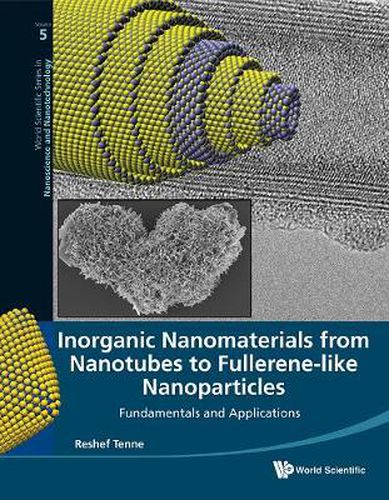Readings Newsletter
Become a Readings Member to make your shopping experience even easier.
Sign in or sign up for free!
You’re not far away from qualifying for FREE standard shipping within Australia
You’ve qualified for FREE standard shipping within Australia
The cart is loading…






Following the striking discovery of carbon fullerenes and carbon nanotubes, it was realized by the author and his teammates in 1992 that such nanostructures are not unique to carbon. In fact, hollow closed structures are common to probably most if not all inorganic compounds with layered structures, like WS2, MoSe2, BN, NiCl2, Cs2O and many others. These highly anisotropic compounds suffer from inherent instability when prepared in nano-sizes and close on themselves to form hollow closed structures in the form of inorganic fullerene-like (IF) nanoparticles or nanotubules (INT).The book takes the reader from the discovery stage, where some fundamental ideas in this field were developed, through the systematic effort to synthesize IF and INT in larger amounts and elucidate their structure. In a few cases, like BN nanotubes and WS2 IF nanoparticles, new strategies permitted synthesis of macroscopic amounts and subsequently systematic study of their properties, offering thereby numerous applications. The reader is taken through this never-ending evolutionary process with a few recent examples demonstrated. The field stands in the crossroads between solid state inorganic chemistry, nanotechnology, materials chemistry and nanomechanical engineering.
$9.00 standard shipping within Australia
FREE standard shipping within Australia for orders over $100.00
Express & International shipping calculated at checkout
Following the striking discovery of carbon fullerenes and carbon nanotubes, it was realized by the author and his teammates in 1992 that such nanostructures are not unique to carbon. In fact, hollow closed structures are common to probably most if not all inorganic compounds with layered structures, like WS2, MoSe2, BN, NiCl2, Cs2O and many others. These highly anisotropic compounds suffer from inherent instability when prepared in nano-sizes and close on themselves to form hollow closed structures in the form of inorganic fullerene-like (IF) nanoparticles or nanotubules (INT).The book takes the reader from the discovery stage, where some fundamental ideas in this field were developed, through the systematic effort to synthesize IF and INT in larger amounts and elucidate their structure. In a few cases, like BN nanotubes and WS2 IF nanoparticles, new strategies permitted synthesis of macroscopic amounts and subsequently systematic study of their properties, offering thereby numerous applications. The reader is taken through this never-ending evolutionary process with a few recent examples demonstrated. The field stands in the crossroads between solid state inorganic chemistry, nanotechnology, materials chemistry and nanomechanical engineering.